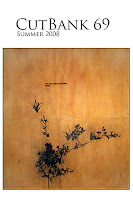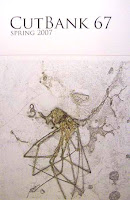
Tupelo Press, 2008
Reviewed by Fiona Sze-Lorrain
A Polyphonic Collage of Dream, Prayer, and Letter
For those seeking a pure or distinct narrative arc, Ardor, at first glance, seems to be a complicated reading enterprise. In an invented but dense structure that interweaves “dreams,” “prayers,” and “letters,” Karen An-hwei Lee has crafted an experimental aesthetic: an utterance. One that focuses on the limits of language. One that stretches the visual boundaries of images — real or surreal — testing the sonic depths of each of her chosen words.
Only one poem prevails throughout this book, though its three modes are in constant dialogue with one another. It opens with a lush, lyrical allusion to the love that Lee is about to unfold by borrowing references from nature and mathematics, the Christian religion, human and avian anatomy:
…
Calque alphabet
Modulation with avian equivalence of hands
Translation perched around a white rose
Photographic grapheme of cardioid delight
Water potential, a hidden sonnet whose
Permissible boundary of closed form
Is a sequence or open cycle in
A heart-shaped curve traced by a point
On the circumference of a circle rolling
Around an equal fixed circle, general equation
ρ = a(1 + cos θ) in polar coordinates
…
Here we see the overriding feature that we are to encounter for the rest of the book: each line contains at least one image. Occasionally an imperative, the line may break with a surprising twist. Always it reads with a rhythm that is hard to classify. Irregular? Syncopated? Yet it flows with a strong beat that seems to drive the voice somewhere else. A background pulse is thus ready for some sort of monologue, utterance, or chant, like a voice, both the same and different, in mutated form — a dream, a prayer, or letter. One cannot help but wonder if each is in fact a figment of all.
An interesting paradox in Ardor is that despite being intricately intertwined, each segment can also stand independently. Texts that read as “prayer” or “letter” may be as short as an interrogative statement (e.g. “Word open, a red geode. Where?”— p.39) or a two-word heading (e.g. “Circumstantial events” — p.53). And yet, one can also find traces of Gertrude Stein’s linguistic play in some of the “dream” passages which contain more explicit narrative cues:
The blind woman, turning in her sleep miles north,
leans over my dream to see whether I am awake. I,
too, am sleeping and lean over her dream, sheltering
her. We are one another’s present skin. Present kin,
she says. Your blood is my blood. Your blood is from
Asia as mine eons ago when everything was internally
bridged, one aortic root. One mitochondrial missus,
original woman (22).
This “blind woman” reappears frequently, and Lee threads these reocurrences with direct references to Gray’s Anatomy, bird biology, and the Bible, as well as lines by the Chinese woman poet, Li Qingzhao (Song Dynasty, 1084 — ca. 1151). Who is this “blind woman”? Is she Lee herself? Someone she has known? Or simply an imaginary personage? The mystery stays intact.
In general, Lee’s word choice is deliberate and sophisticated. In keeping it so, however, she perhaps risks rendering the already polyphonic and surreal texts more inaccessible to an honest read. That said, her poetic personae are many — birds in flight; the blind woman’s infant daughter; an old gardener; the kwashiorkor, famished red boy; among others. Each is transformed through the simple metaphor of love — a human heart — all of them seeking the genesis of poetic language. This, as an endeavour to write, is already an unusual beginning.
**
Ardor is Karen An-hwei Lee’s second book-length poetry publication. Her first book, In Medias Res (Sarabande Books, 2004), was winner of the Kathryn A. Morton Prize and the Norma Farber First Book Award. Her chapbook, God's One Hundred Promises, received the Swan Scythe Press Prize. The recipient of an NEA Feollowship, Karen lives and teaches on the West Coast.
**
Fiona Sze-Lorrain writes poetry under her nom-de-plume, Greta Aart. Some of her recent work appears in Raven Chronicles, New Politics, Oak Bend Review, La Fovea, etc. She is also the editor of Silhouette/Shadow: The Cinematic Art of Gao Xingjian (2007), a translation of Gao Xingjian’s poetry from the French. Fiona lives in France. (www.fionasze.com)



